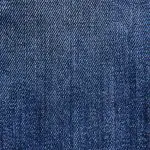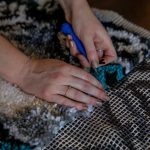Looking to add some glitz to your fabric creations? Adding rhinestones is a fantastic way to elevate your designs. Did you know that the rhinestone market is expected to reach $5.6 billion by 2027?
Get ready to master the art of embellishing fabric with these sparkling gems. First, select the perfect rhinestones for your project, then prep your fabric surface for application. Once you're ready, carefully apply the rhinestones and set them securely.
Finally, learn the best practices for caring for your rhinestone-embellished fabric. With these steps, you'll soon be adding a touch of glamour to your fabric creations with ease.
Key Takeaways
- Consider the size, color, and shape of the rhinestones based on the fabric and design.
- Choose rhinestones that complement the color scheme of the fabric.
- Select rhinestones that are compatible with the fabric in terms of heat application and durability.
- Opt for durable rhinestones to ensure long-lasting sparkle.
Choosing the Right Rhinestones
You should select rhinestones based on their size, color, and shape to ensure they complement your fabric and design.
Rhinestone sizes can vary from tiny, delicate ones to larger, more dramatic options. Consider the scale of your fabric and the overall design when choosing the size. For instance, smaller rhinestones work well for intricate designs, while larger ones can make a bold statement.
When it comes to colors, take into account the hues in your fabric and the overall color scheme of your project. It's important to ensure that the rhinestones complement the fabric's color rather than clash with it.
Additionally, consider the shape of the rhinestones. Some designs may benefit from the use of round rhinestones, while others might be better suited to more angular shapes.
When selecting rhinestones, it's also crucial to consider fabric compatibility and durability. Certain fabrics may not be able to withstand the heat required to affix rhinestones, so be sure to choose rhinestones that can be applied without damaging the fabric. Similarly, opt for durable rhinestones to ensure that they remain intact and sparkling for the long term.
Preparing the Fabric Surface
To prepare the fabric surface for adding rhinestones, make sure it's clean and free of any dust or debris that could interfere with the adhesion of the rhinestones. Proper fabric selection is essential for successful rhinestone application.
Some fabrics, such as cotton, denim, or canvas, provide a better surface for adhering rhinestones due to their texture and weave. Consider the following steps for preparing the fabric surface:
- Fabric Selection:
- Choose a fabric with a tight weave to ensure the rhinestones have a secure base for adhesion.
- Consider the fabric color and texture to complement the rhinestones and enhance the overall aesthetic appeal.
- Surface Treatment:
- Clean the fabric thoroughly to remove any dirt, oil, or sizing that may hinder rhinestone adhesion.
- If necessary, iron the fabric to ensure a smooth and flat surface, which will make it easier to apply the rhinestones evenly.
- Test Adhesion:
- Before applying rhinestones to the entire fabric, test a small area to ensure that the chosen fabric is compatible with the adhesive of the rhinestones.
Applying the Rhinestones
Start by carefully placing the rhinestones on the fabric, positioning them according to your design or pattern.
Once you have the rhinestones where you want them, it's time to secure them in place. There are a few adhesive options to consider when applying rhinestones to fabric.
Fabric glue is a popular choice for its ability to adhere well to various fabric types without damaging them. It's important to use a small amount of fabric glue to avoid any seepage around the rhinestones.
Another option is hot fix adhesive, which is activated by heat and perfect for fabrics that can withstand the temperature. A hot fix applicator or a household iron can be used to apply heat and set the rhinestones in place.
Be sure to follow the manufacturer's instructions for the specific adhesive you choose to ensure the best results.
Once the adhesive has set, your rhinestones will be securely attached to the fabric, adding a dazzling touch to your design.
Setting the Rhinestones
Positioning and securing the rhinestones is essential for achieving a professional and long-lasting embellishment on your fabric. Proper rhinestone placement and adhesion techniques are crucial to ensure that the embellishments stay put and maintain their sparkle through wear and washing.
Here are some key points to consider when setting the rhinestones:
- Placement:
- Plan the placement of the rhinestones on your fabric before applying any adhesive.
- Use a fabric marker or chalk to lightly mark the positions where you want to place the rhinestones. This will help you maintain a uniform and balanced design.
- Adhesion Techniques:
- Apply a small amount of fabric glue or adhesive specifically designed for rhinestones to the back of each stone.
- Place the rhinestones onto the marked spots on the fabric, pressing them gently into the adhesive.
- For a more permanent solution, consider using a heat-setting tool to secure the rhinestones onto the fabric. This method is especially effective for washable items.
Caring for Rhinestone-Embellished Fabric
After setting the rhinestones, properly caring for rhinestone-embellished fabric is essential to maintain the sparkle and longevity of the embellishments. When storing rhinestone embellished fabric, it's important to avoid folding or creasing the fabric, as this can cause the rhinestones to become loose or fall off. Instead, gently roll the fabric and store it in a cool, dry place. If you need to hang the fabric, ensure that it's supported evenly to prevent the rhinestones from pulling the fabric out of shape.
Cleaning rhinestone-embellished fabric requires special attention. Hand washing is often the best method to preserve the rhinestones. Use a mild detergent and cold water, and avoid rubbing directly on the rhinestones. If machine washing is necessary, place the fabric in a mesh laundry bag and use the delicate cycle. Always air dry the fabric by laying it flat, as the heat from a dryer can loosen the rhinestones.
Frequently Asked Questions
Can Rhinestones Be Added to Any Type of Fabric, or Are There Certain Fabrics That Work Best With Rhinestone Embellishments?
You can add rhinestones to almost any fabric, but certain fabrics like cotton, denim, and satin work best. When applying, ensure the fabric is clean and dry, use a strong adhesive, and apply pressure for a secure bond.
Are There Any Special Considerations to Keep in Mind When Adding Rhinestones to Delicate or Stretchy Fabrics?
When adding rhinestones to delicate or stretchy fabrics, consider the fabric's flexibility and durability. Choose fabrics with tight weaves for better adhesion. Experiment with different pattern creations and design ideas to ensure the rhinestones complement the fabric's texture.
How Can I Create a Pattern or Design With Rhinestones on Fabric, Rather Than Just Randomly Placing Them?
To create intricate designs with rhinestones on fabric, start by sketching your pattern. Use a fabric pencil to mark the design, ensuring proper spacing and alignment. Then apply adhesive and carefully place the rhinestones following your sketch for a sparkling touch.
Can Rhinestones Be Removed From Fabric if I Change My Mind or Want to Reposition Them?
Yes, rhinestones can be removed from fabric if you change your mind or want to reposition them. Gently heat the back of the fabric with an iron to loosen the adhesive and carefully peel off the rhinestones.
Are There Any Specific Types of Thread or Adhesive That Work Best for Securing Rhinestones to Fabric, and How Can I Ensure They Stay in Place Over Time?
To ensure rhinestones stay in place, use the best adhesive for fabric compatibility. Choose durable thread for long-term adhesion. This ensures your rhinestones remain secure and sparkling, enhancing the fabric's appearance.
- How Does Ring Spun Cotton Affect Garment Fit and Shape Retention? - August 13, 2024
- What Are the Challenges in Producing Ring Spun Cotton? - August 13, 2024
- Is Ring Spun Cotton Suitable for Plus-Size Clothing? - August 13, 2024







